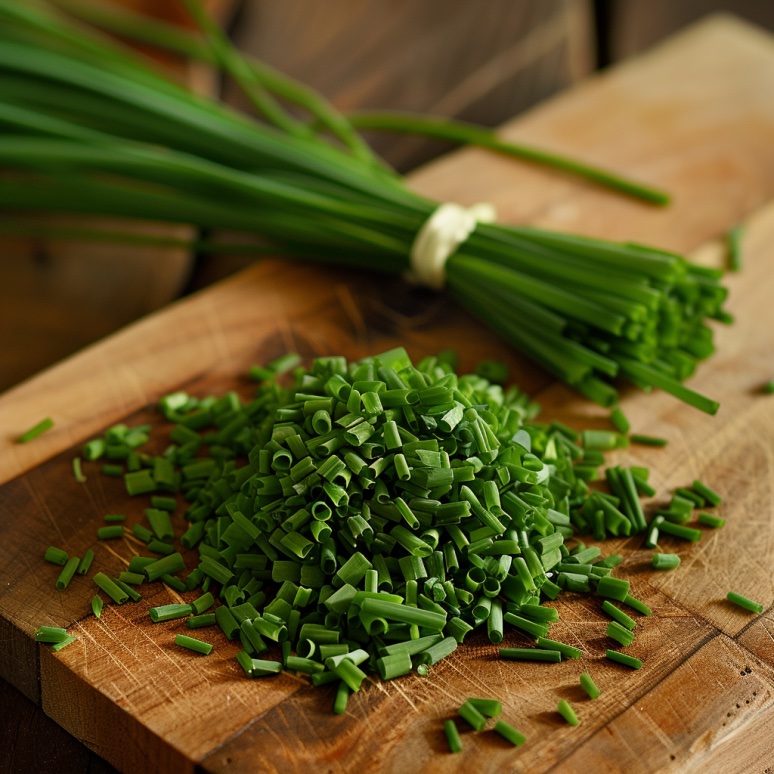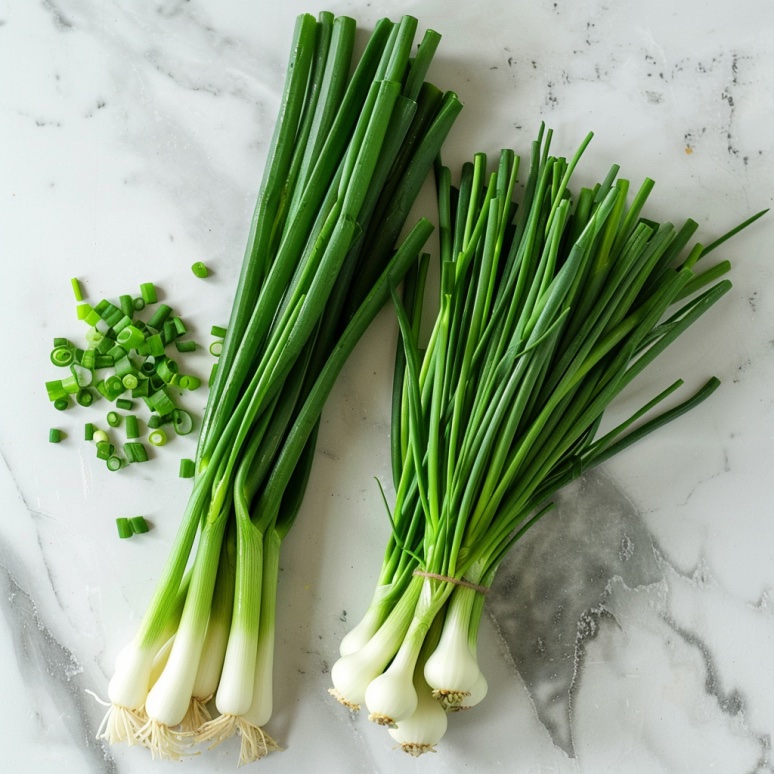Scallions and chives, while often used interchangeably in cooking, are two distinct members of the Allium family with unique characteristics and flavors.
What Are Chives

Chives are slender, hollow, grass-like herbs with a delicate onion flavor and a mild aroma. They belong to the same genus as onions, garlic, and leeks, known for their pungent flavors and culinary versatility. Chives are prized for their subtle taste, making them an excellent addition to a variety of dishes where a mild onion flavor is desired. They are commonly used as a garnish, adding a burst of color and freshness to salads, soups, baked potatoes, and savory dishes.
Cultivating chives is relatively straightforward, and they can thrive in gardens or pots in both temperate and cooler climates. The plant produces slender green stems that can reach up to a foot in height and are typically harvested by snipping the leaves with scissors or shears. Chives are valued not only for their culinary uses but also for their ornamental appeal, often cultivated for their attractive pinkish-purple flowers.
What Are Scallions (Green Onions)

Scallions, also known as green onions, belong to the same genus as chives but have distinct differences in appearance, flavor, and culinary applications. Unlike chives, which have hollow, slender stems, scallions have a bulbous white base with long, slender green stalks. Both the white and green parts of the scallions are edible, offering a mild onion flavor with a hint of sweetness.
Scallions are commonly used in various cuisines worldwide, adding a fresh, crunchy texture and a subtle onion flavor to dishes. They can be used raw in salads, salsas, and garnishes or cooked in stir-fries, soups, and noodle dishes. The versatility of scallions makes them a staple ingredient in many culinary traditions, prized for their ability to enhance the taste and visual appeal of a wide range of dishes.
The Differences Between Scallions and Chives

The primary differences between scallions and chives lie in their appearance, flavor intensity, and culinary uses. Chives have a more delicate texture and milder flavor compared to scallions. While both herbs belong to the Allium family and share similar aromatic qualities, chives are typically used as a garnish or subtle flavor enhancer, whereas scallions can be used raw or cooked in various dishes to impart a more pronounced onion flavor.
In summary, while chives and scallions share some similarities, including their membership in the Allium family and their culinary versatility, they each offer unique qualities that distinguish them in the kitchen. Understanding these differences allows chefs and home cooks to leverage the distinct flavors and textures of chives and scallions to elevate their culinary creations and explore a diverse range of flavor profiles. chopped celery can add a refreshing crunch to salads, soups, and stuffing recipes. In dishes where leeks are primarily used for their aromatic qualities, celery can provide a similar effect.


